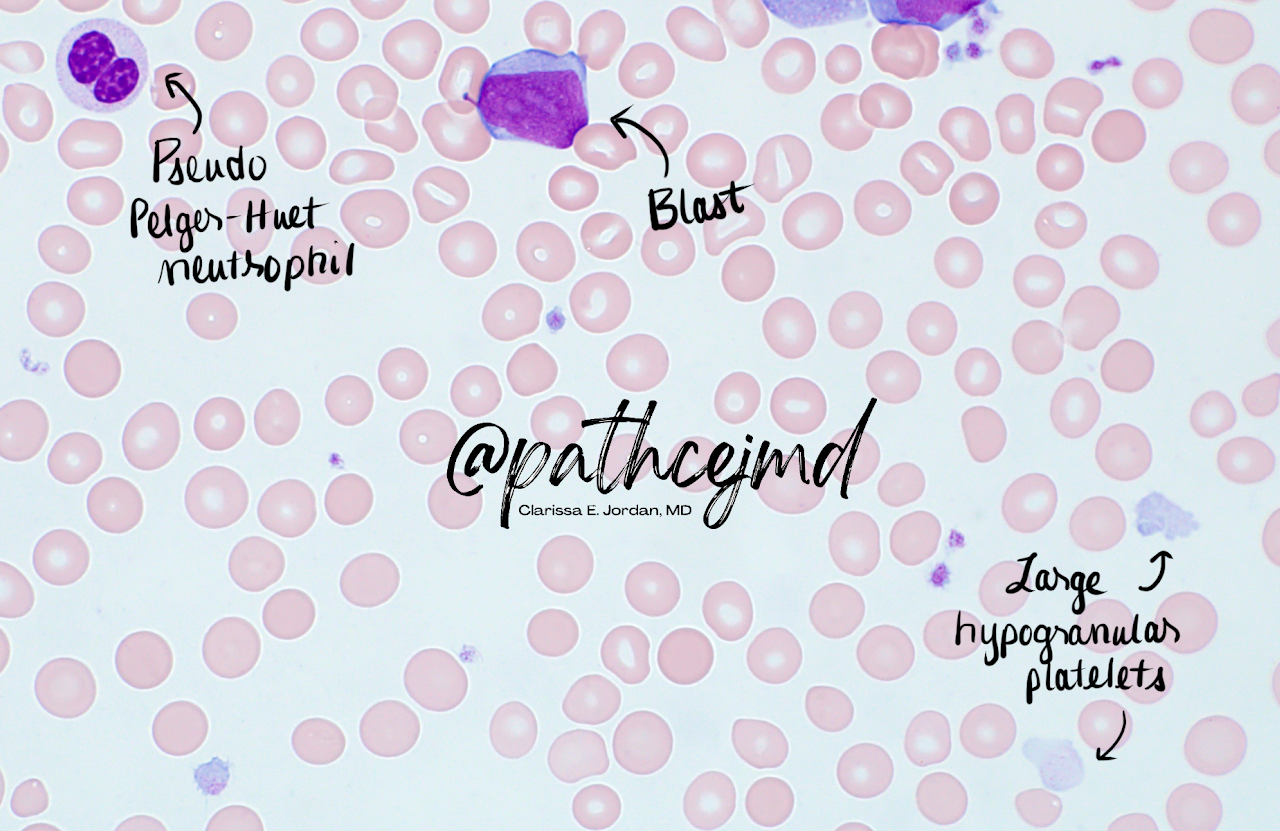Case 10: AML Subtypes Compare and Contrast

AML with biallelic CEBPA has a favorable prognosis
Interestingly, only cases with biallelic CEBPA have a favorable prognosis!
This is because AML with biallelic mutations have a different mutational landscape than AML with monoallelic mutations, which tends to have more cooperating mutations ⬇️
Unfortunately, AML with inv(3) has a very poor prognosis.
The inversion moves the GATA2 enhancer, which activates the oncogene MECOM
In terms of morphology, dysplastic small megakaryocytes are common, and peripheral blood can have giant, hypogranular platelets (as in this case)

Find this case on Twitter:
🩸Quick #HemePath AML subtype compare/contrast #PathTweetorial 🧵
— Clarissa E. Jordan, MD (@pathcejmd) April 6, 2022
AML w biallelic CEBPA & AML w inv(3)
Which of these entities (1 of which pictured below) has a favorable prognosis? (Poll⬇️)#PathTwitter #MolecularPath @MayoClinicPath
PS Always learning - welcome any feedback! pic.twitter.com/zV8hTw7za7